THE GOVERNMENT FAILED TO KEEP UP WITH THE REVISION AND CODIFICATION OF LEGISLATION PERIODICALLY
By Dr M.S. Mohamed Hussain, (LL.M, PhD) President’s Counsel
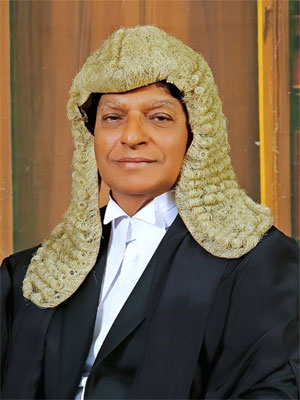 Do you know today that mostly, the consolidated and codified legislation used by the Law sectors is the Codified Legislative Enactment - Revised Edition -1980 (unofficial)
Do you know today that mostly, the consolidated and codified legislation used by the Law sectors is the Codified Legislative Enactment - Revised Edition -1980 (unofficial)- Do Parliamentarians know that even their “Parliament (Powers and Privileges) Act No. 21 of 1953” has been omitted by mistake in this Code of legislation while it remains as a part of the Law?
- Do you all know that Act No. 29 of 1974 finally amended the Interpretation Act but contains in the Consolidated Edition of Legislative Enactment of 1980 as a wrongly modified enactment without authority?
- Do the Ministry of Justice, Law Commission and Attorney General Department know about the errors contained in this edition?
- Do you know that the government Legal Draftsman is aware of this lapse and correctly using the Revised Edition of 1956 (Official) as base law when making amendments to the existing law?
We know about the ever-increasing volumes of legislation, primary and delegated, and rules, regulations, and by-laws, which govern the government's and general public's conduct and affairs in Sri Lanka. Largely new laws have been passed, and amendments have been made to existing laws in several areas. Under article 75 of the Constitution of the Republic of Sri Lanka, Parliament has passed new laws and amended and repealed several legislative enactments since 1978. Further, under Article 168, read with Article 170, all laws, written laws and unwritten laws, in force immediately before the commencement of the Constitution are to be continued in force subject to the provisions of the Constitution until such changes are made. Accordingly, our statute book contains laws from 1799 that are still in force and subject to amendment of some laws, and some have been repealed. Some old laws, as well as laws passed after 1978, have been amended on several occasions. After the 13th Amendment to the Constitution, Statutes have been passed by the Provincial Councils on the devolved subjects. Further, some rules and regulations have been made by the public officers. Local governments have passed by-laws.
Therefore, periodic codification of statutory laws and subordinate legislation is essential to making the law more straightforward, shorter, and easily accessible. Periodical consolidation has real practical benefits for those who work with the law (such as legal practitioners, judges, law teachers, law students, state officers, and even the public). Further, this practice is essential for those concerned with making laws through the parliament, provincial councils, local governments, and other public institutions.
Codification of Law:
In 1821, the government took steps to collect the laws in force in this country and revise and codify all the legislations in force at that time. Afterwards, revision and codification were done periodically. Codification of legislative enactments was successively undertaken in 1841, 1846, 1854, 1894, 1900, 1907, 1913, 1923, and 1938. Further, Statutory Reprints Ordinance No. 19 of 1936 was enacted to make provision for the publication and authentication of revised reprints of written law on 16th December 1936.
1938 Statutory Reprint Ordinance No. 19 of 1938 was enacted, granting authority for reprinting and codifying legislation. This ordinance gave revision limited power. Afterwards, a revised edition was produced in 1956 with full authority. This shows the interest the authority took to keep up the revision and consolidation projects in the past. Up to date, this is the official codified revised edition of legislation.
Even today, the Legislative Enactment 1956 is in force as an official tool, whatever amendments are made to the legislative enactments or Acts of Parliament. Further, references are made to the chapters/titles under the 1956 edition. This was done under the power given by the Revised Edition of the Legislative Enactments No. 2 of 1956.
It could be noted that there are 481 chapters (law enactments) from 1799 up to 31st January 1956. These enactments have been included as chapters excluding the repealed enactments before 31st January 1956, under the Revised Edition of 1956, which was edited by the former Chief Justice Hema Basnayaka as the Commissioner, under the authority of Revised Edition of the Legislative Enactments Act No. 1 of 1956 (LE), passed on 1st February 1956 by the Parliament. This was enacted for the “Preparation and publication of a revised edition of the Legislative Enactments of Ceylon” as recited in that Act. We must be very grateful to the late Justice Hema Basnayaka for the pain of supervising and completing the massive work done systematically and much more accurately. Under the law, the Commissioner had unique powers to omit any enactment repealed expressly or by necessary implication, which had expired, etc. Further, ten main categories of powers are also mentioned in that law. The Commissioner also had vast power to consolidate the enactments and revisions. There are some guidelines for the whole project regarding revisions, arrangements, consolidations, savings of existing subsidiary legislation, appointments and acts, and other supplementary issues. The Act gave power to publish the Revised Edition of 1956 as ‘Published under the authority of the Government of Ceylon.’ It could be noted that the whole project work was done and finalised, and the legislative approval under that Act was obtained before its publication by the Government Printer.
Parallel to this project, Rules and Regulations known as Subordinate legislation were revised, codified, and published in several volumes.
From that point, to continue a system of periodical consolidation of legislative enactments and for a limited scale of revisions, the commissioner has correctly and prudently inserted under the authority Statutory Re-print Ordinance No. 19 of 1936, which was passed on 15 December 1936, as chapter 4 of the LE of Edition 1956. This appears as chapter 14 in the LE 1980.
Revision and Consolidation of the Legislative Enactment -1980
In 1980, under the Chairmanship of Hon. Justice E.R.K.D.D.M. Deheragoda, former Judge of the Supreme Court, there was a Revision and Consolidation of the Legislative Enactment published by the Ministry of Justice. Long after 1956, this project was undertaken by Justice Deheragoda. The project would be appreciated, but there is no proper legal authority to revise the edition of LE 1956 and publish it as a revised edition of 1980. However, it is regrettable to note that there are so many omissions and mistakes in this edition, which contains 638 chapters in 20 volumes, due to the project team's lack of efficiency and supervision. However, this complete set is used by all the legal sectors, except the government legal draftsman, as the base tool.
This attempt at revision and codification in 1980 is unlawful because it has not complied with the provisions of the Statutory Re-print Ordinance No. 19 of 1936, as explained above. Further, no law was passed supporting this work, as was done in the case of the publication of the revised edition of 1956, which had the authority to do so under the Revised Edition of the Legislative Enactments Act No. 2 of 1956.
It is mentioned in this work that it was published “under the authority of the government of the Democratic Socialist Republic of Sri Lanka.” But it must be noted that actual authority for the publication is not to be found in any general pre-existing enactment or any legislation enacted explicitly for the purpose. It looks like no attention had been given to the provisions of the Statutory Re-print Ordinance No. 19 of 1936.
According to the editor's preface, the work on the Revised Edition (unofficial) in 1980 began with the expectation of validation by a future enactment. However, this never happened, and the Ministry of Justice has forgotten about it.
Further, this work has violated the provisions in section 4 of the Statutory Re-print Ordinance No. 19 of 1936, which reads, “Nothing in this Ordinance shall be deemed to authorise the publication of a revised edition of the Legislative Enactments.…”
Further, there are many difficulties in accepting this work as a base with acknowledgement because there is no mention of the source of authority for the publication or revision, so even the explanation given in the preface is unsatisfactory. Because the work is like a revision, it could not have been published under the Statutory Reprint Ordinance No. 19 of 1938. Besides, there are some obvious mistakes in the Revised Edition of 1980. This error was noticed in the case of Sitthi Maleeha and Another v Nihal Ignatius Perera and others, reported in [1994] 3 Sri Lanka Law Report on page 270 (Court of Appeal). In page 272 of the judgment, the Supreme Court held, revising an order of the District Judge,
“it is seen that the person preparing the 1980 revision has recast the section incorporating substantial modifications. The version as recast has no legislative authority since the 1980 revision is "unofficial" as stated at the commencement of each volume of these enactments. In these circumstances, we hold that the learned District Judge erred in making her order on the basis of this unofficial revised version of the Act.”
This exemplifies how the District Judge was misled by errors in the revision of the law, and the parties suffered in the appellate court. As mentioned above, the project could have codified the laws as done in 1966 by supplementary volumes of two categories: a collection of amendments and a collection of new Acts. However, the project officers of the Ministry have gone beyond their powers.
Further, several mistakes appear in the codification of the enactments, for example, Parliament (Powers and Privileges Act No 21 of 1953 is missing from the Revised Edition of 1980, which was enacted on 7th April 1953. (Chapter 383 of the Revised Edition of 1956). This Act was never amended or repealed up to the promulgation of the Constitution in 1978. Its Article 67 reads, “The privileges, immunities and powers of Parliament and its Members may be determined and regulated by Parliament by law and until so determined and regulated, the provisions of the Parliament (Powers and Privileges) Act, shall, mutatis mutandis, apply.” In this Article, “Parliament (Powers and Privileges) Act” means Chapter 383 of the Revised Edition of 1956 because no other interpretation is given under Article 170. This Act was amended by Law No. 5 of 1978, and this Act is also missing in the Revised Edition of 1980. Thereafter, again, it was amended by Act No. 17 of the 1980 Act, and this was also omitted by mistake or negligence. Then, this Act was further amended by Act No. 25 of the 1984 Act, No. 37 of the 1987 Act and finally, by No. 27 of 1997. The government legal draftsman has even given reference to ‘Chapter No. 383’ for the Amendment Act No. 27 of 1997. But, unfortunately, the Editor of Parliament website has failed to provide any reference to the original Act or amending Act; it may be confused as to what the valid Revised Edition, whether 1956 or 1980, but it should be 1956 as recognised by the Government Legal Draftsman Department.
Not only this. There are some apparent errors appear in the Revised Edition -1980 (unofficial), narrated as follows: -
1. Fifty-three (53) Ordinances and Acts contained in the Revised Edition-1956 omitted wholly, including the Parliament (Powers and Privileges Act No. 21 of 1953 and its amendment Law No. 5 of 1978.
2. Three Ordinances /Acts contained in the Revised Edition-1956 omitted partly.
3. Forty-four (44) Ordinances /Acts passed after 1956 were omitted wholly.
4. Fifteen (15) Ordinances /Acts laws passed after 1956 omitted partly.
5. Another enactment contained in the Revised Edition-1956 has not been omitted but, by mistake, mentioned as omitted in the list at the end of each volume.
6. Another two enactments contained in the Revised Edition-1956 omitted without express reference in the list at the end of each volume.
7. Three enactments enacted in 1980 were omitted erroneously from the Revised Edition 1980.
Some exclusions may be valid, but there is no legislative authority to have done so. The details of those omissions can be provided.
Under section 2(b) of the Statutory Re-print Ordinance, omission of enactment can be done as stated therein, “…or ordered to be omitted by any other written law enacted, promulgated or otherwise brought into operation or declared to be in force before the date of reprinting,” only.
Even editors cannot make any enactments easily, assuming that there is an implied repeal after passing a new law on the subject. This issue was discussed in the S.M.A.M. Zainul Abdeen v. S.M. Rasheed case reported in (1986) 1 Colombo Appeal Law Report on page 586. At the time of the enactment of Act No. 2 of 1958, the provisions relating to partition action were included in the Partition Act No.16 of 1951. Act No. 16 of 1951 was repealed by the Administration of Justice (Amendment) Law No.25 of 1975, which embodied the provisions of law relating to partition action. (presently, Partition Act No. 21 of 1977 is in force). In the appeal court decided that the Law No.25 of 1975 does not operate as an implied repeal of Partition Act No.2 of 1958. Therefore, simply omitting the state is dangerous and misleading the law.
Further, Edition 1980 contains several erroneous revisions. For example, this mistake appears in the Interpretation Ordinance, which is second in importance to the Constitution—1978.
According to the Revised Edition of 1956, this Ordinance appears as Chapter 2. Interpretation Ordinance was enacted on 3rd December 1901 by the Ordinance No. 21 of 1901. This Ordinance was finally amended by Law No. 29 of 1974 in the year of 1974. This appears in the Revised Edition of 1980 as chapter 12. As no amendment was made until the end of the year 1980, any revision could not have been made in line with the Constitution 1978. However, there is an attempt made to do by revision incorporating the changes under the Constitution as the interpretation of the word “enactment”, as codified in the Revised Edition, Chapter 1 states as, ‘(g) " enactment " shall include an Ordinance as well as an Act of Ceylon;’
However, the Interpretation Ordinance have been added to chapter 12 in LE-1980, as follows.
Section 2-
(f) .. enactment" shall mean any Ordinance, Law or Act enacted by the Legislature of Ceylon or Sri Lanka, as the case may be, and shall include -
(i) the Constitution of the Democratic Socialist Republic of Sri Lanka, 1978.
(ii) any enactment having the force of law Ph Sri Lanka and promulgated in the form of a proclamation or regulation prior to the lst day of January 1834;
(iii) the Tesawalamai or the laws and customs of the Malabars of Jaffna promulgated by the Dutch Government of Ceylon in the year seventeen hundred and seven and referred to in the Tesawalamai Regulation; and
(iv) the Ceylon (Parliamentary Elections) Order in Council, 1946.
Even though “Ceylon (Parliamentary Elections) Order in Council, 1946” is mentioned here, it was omitted by mistake in the 1980 edition. However, it appears as Chapter 381 in the 1956 edition. Also, under Article 89(e) of the Constitution 1978, it seems applicable on matters of “Disqualification to be an elector,” etc. Even 101(2) of the Article of the Constitution read as, “(2) Until Parliament by law makes provision for such matters the Ceylon (Parliamentary Elections) Order in Council, 1946 as amended from time to time, shall subject to the provisions of the Constitution, mutatis mutandis, apply.”
Thus, this shows that the government and the Ministry of Justice failed their statutory duties in permitting the publication of the Revised Edition of 1980 and have failed to correct it to date.
Even I published the book in 2001, titled “Alphabetical Index to the Legislative Enactments of Sri Lanka (1799 - December 2000) (with a comparative table of the revised edition of 1956 and comments on the revised edition of 1980) and brought to the notice of the authorities and public about those mistakes, but no response received; no correction procedure discussed. (This comment has no reference to any particular government in a political sense) but a reality of the mechanism of the most essential pillar of the state, which needs corrections.
It should be noted that the Legal Draftsman Department still correctly refers to the amendments in terms of the chapter arrangements in the Revised Edition of 1956—and not on the publication of 1980. This may be due to the reasons mentioned above.
Ministry of Justice mentioned in LE 1980 is an unofficial publication. How can a Ministry publish any document under the label of “unofficial publication,” especially laws of the land? When there is legislation, “Statutory Re-print Ordinance No. 19 of 1936,” why does the Ministry of Justice deviate from the statutory provisions?
This deficient practice was followed by several private entrepreneurs thereafter, even on their respective websites, including www.lawnet.lk. It should be emphasised that no Governmental officer or private person has a legal right to publish law under the label of “Revised Edition”, and whatever is available in the market is a violation of the object of “Statutory Re-print Ordinance No. 19 of 1936, in which it’s object is mentioned as “To make provision for the publication and Authentication of Revised Re-prints of Written Laws,” subject to many limitations as mentioned in the section 4. That also must finally be printed by the Government Printer.
Fortunately, at present, Legal Draftsman correctly refers to the 1956 edition when referring to the legislation passed before 1956, ignoring the Edition of 1980
As mentioned above, statutes inadvertently omitted in the Revised Edition of 1980 should be part of the Statutory Book. These laws are still in force, and whoever looks at the Revised Edition of 1980 for the law might be misled, as those are not shown as the laws in force. This position badly affects delivering justice unless a hard-working lawyer or a judge understands the correctness by exploring themselves.
From Act No. 1 of 1981 to the end of 2024, at least 1852 new Acts and/or amendments to the existing law were passed. Several enactments were repealed from the supplement edition of 1966. Still, it cannot be said that those were entirely repealed without proper research because sometimes repealing has been done subject to certain reservations.
Even the Department of Government Printing website omitted details of the publication of codified or consolidated law before 1956/1980, which is inappropriate practice. No proper listing of law is available on the Parliament website, either.
Law net.com
After hosting, www.lawnet.lk Ministry of Justice attempted to publish The Revised Edition of 1980 and laws from 1981 to 2006. Even this project is full of errors, as mentioned above. Several legislative Enactments were omitted, and some significant parts of the enactments were entirely dropped. Almost all the Ordinances, Laws and Acts having schedules at the end of the enactment have been dropped intentionally.
LAW COMMISSION AND ITS RESPONSIBILITY:
Law Commission Act No. 3 of 1969 in Sri Lanka expects the commission to Codify the law under section 4. Further, it requires periodic submission of reports to the Ministry of Justice, but no such attempt has been made. No attention was paid, nor was action taken, to examine, study, and review the “Revision and Consolidation of the Legislative Enactment - 1980” and its supplementary publications.
SUGGESTIONS
After studying the developments in other countries on that matter, the Statutory Re-print Ordinance No. 19 of 1936 should be amended. A system of permanent bodies must be established to revise and codify the Legislative Enactments and subordinate legislations and supplement them annually by fitting new enactments and amendments to the code so codified, based on the Revised Edition of 1956.
Even the Law Commission Act is outdated and needs amendments. A better remedy is an appointment of a permanent officer as the Commissioner General works with officers to review and revise the law as a permanent body. Further, the government can appoint a commissioner, as it did in 1956, to revise and codify the legislation by an Act of Parliament.
-
Still No Comments Posted.






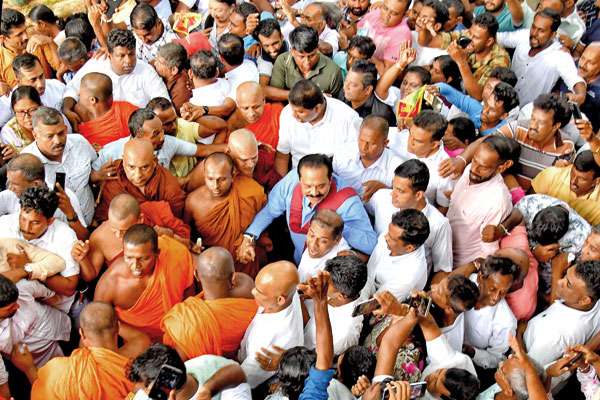
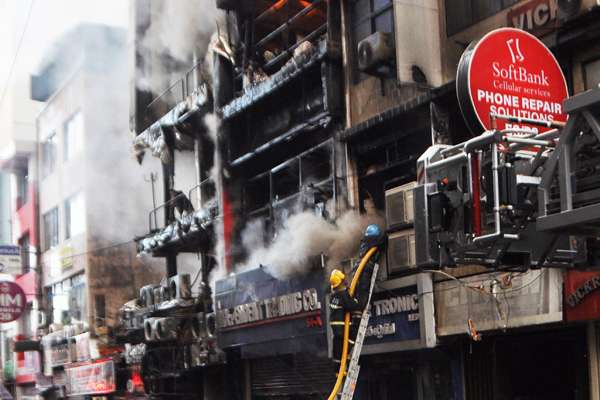

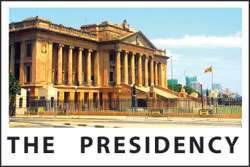


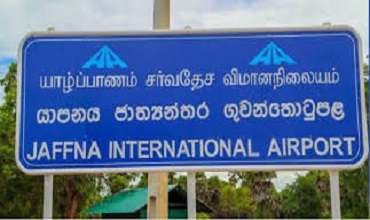

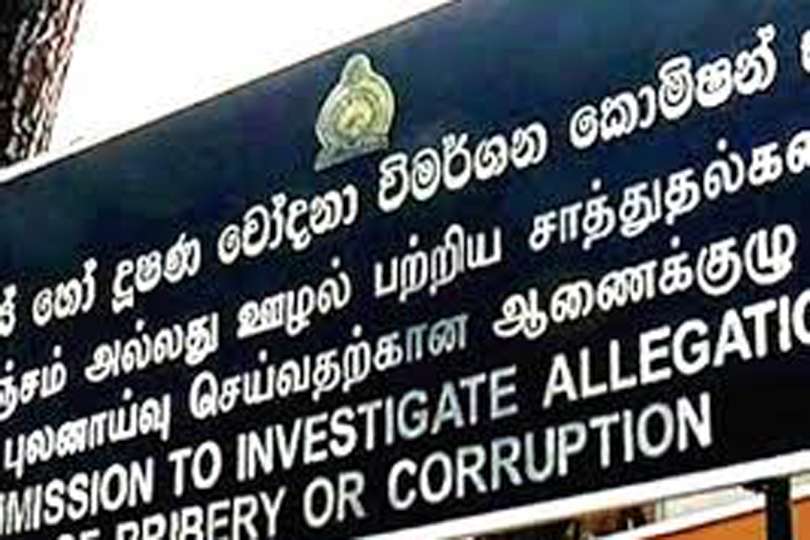
Leave Comments